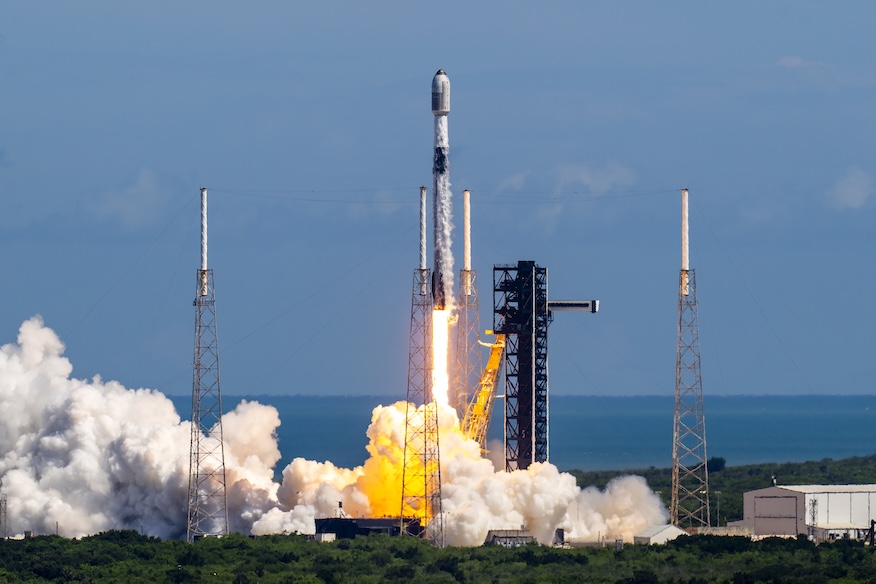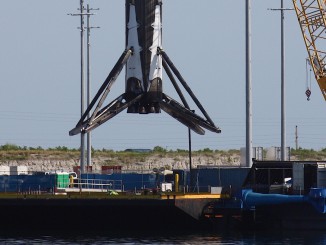
Update June 25, 5:18 p.m. EDT: SpaceX confirms satellite deployment.
SpaceX followed up its predawn launch of four astronauts to the International Space Station with the flight of another Falcon 9 rocket, this time carrying the company’s Starlink internet satellites on board.
The mission, dubbed Starlink 10-16, had 27 of the Version 2 Mini Optimized satellites on board that add to a growing constellation of nearly 8,000 satellites in low Earth orbit. Liftoff from Space Launch Complex 40 at Cape Canaveral Space Force Station happened at 3:54 p.m. EDT (1954 UTC).
The 45th Weather Squadron forecast an 80 percent chance for favorable weather during the launch window, citing potential concerns with cumulus clouds in the area. Meteorologists were tracking the chance for some coastal, isolated showers.
SpaceX used the Falcon 9 booster B1080 to launch the Starlink 10-16 mission, which flew for a 20th time. It previously launched Axiom Mission 2, Axiom Mission 3 and the European Space Agency’s (ESA) Euclid among others.
A little more than eight minutes after liftoff, B1080 landed on the droneship, ‘Just Read the Instructions.’ This was the 126th touchdown on the vessel and the 468th booster landing to date.
In the background of this Falcon 9 launch, the newly named Dragon Grace spacecraft is making its way to the space station. Docking is anticipated around 7 a.m. EDT (1100 UTC) on Thursday, June 26, at the space-facing port of the Harmony module.
Axiom Mission 4 represents the fifth trip to space for the mission’s commander, former NASA astronaut Peggy Whitson, and the first for her three crew mates.



